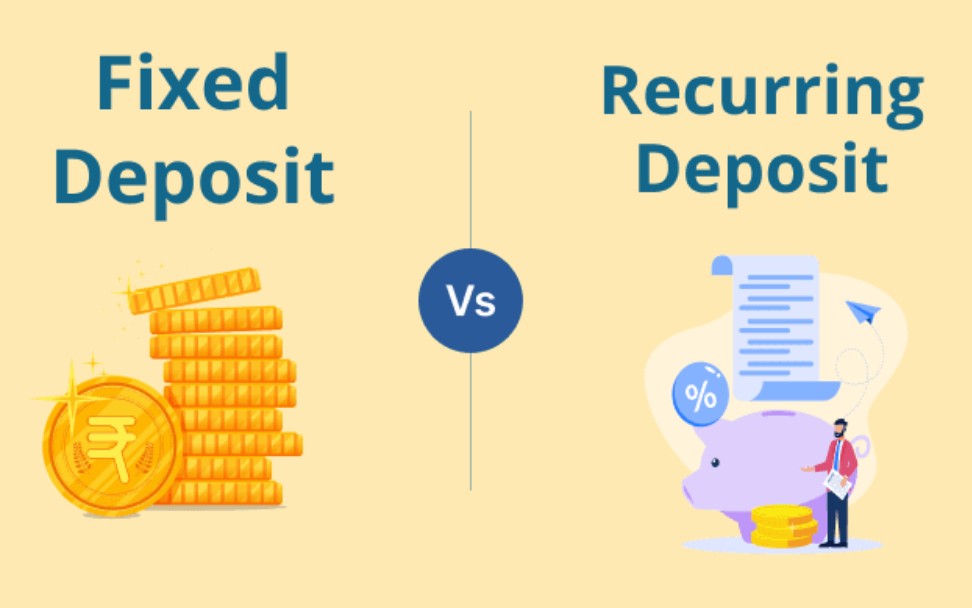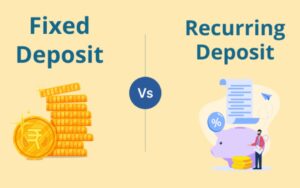
For decades, Indian savers have turned to fixed deposits (FDs) and recurring deposits (RDs) as the most dependable ways to grow their money. They are simple, low-risk, and backed by the security of regulated banks. But beneath this shared reputation lies a crucial difference: how fast they actually grow your savings.
FDs and RDs both serve very different kinds of savers, but when you compare their growth side by side, the results are not the same.
This blog explores FD Laddering vs Recurring Deposits. Two strategies are often spoken about interchangeably, yet are designed for completely different financial situations.
What is FD Laddering?
FD Laddering is the practice of splitting a lump sum into multiple fixed deposits with different maturity periods. Instead of locking ₹3 lakhs in one three-year FD, you could divide it into three FDs of ₹1 lakh each with tenures of one, two, and three years.
The idea is to avoid tying up all your money for too long while still enjoying the stability of FDs. As each deposit matures, you either use the funds or reinvest them at the prevailing rate. This ensures:
- Liquidity – money is available at regular intervals.
- Flexibility – you can adjust based on market interest rates.
- Better optimization – in a rising interest cycle, reinvested deposits may fetch higher returns.
For savers with lump sums, laddering adds structure and flexibility to what would otherwise be a locked investment.
What is a Recurring Deposit (RD)?
A Recurring Deposit works on a very different model. Instead of starting with a lump sum, you commit to saving a fixed amount every month for a chosen tenure. At maturity, you receive the total of your contributions plus interest.
RDs are attractive for those who:
- Don’t have surplus capital but can save monthly from their salary.
- Want enforced discipline through automated deposits.
- Prefer predictability, since the maturity value is usually known upfront.
The limitation is that not all contributions enjoy the same growth. The first installment earns interest for the entire tenure, while the last one earns only for a single month. This makes the growth curve slower compared to an FD of equivalent value.
Growth Comparison: FD Laddering vs RDs
The difference between the two becomes clear when you compare actual growth.
- ₹3 lakhs in laddered FDs at a higher interest rate would earn roughly ₹42,000 (*T&C apply) over two years.
- ₹12,500 per month in an RD for 24 months at the same rate would yield closer to ₹22,000–₹25,000.
The FD structure grows faster because all of your money is earning from the start. With RDs, your money is being added gradually, so only part of it benefits from compounding at any given time.
When FD Laddering Works Best
FD Laddering is suitable when:
- You already have a lump sum to invest (bonuses, savings, business profits)
- You want partial access to funds at regular intervals
- You expect interest rates to rise and want to reinvest at better rates
- Your financial goals fall in the short to medium term (1–5 years)
It’s particularly effective for those who need both liquidity and higher growth without moving into riskier asset classes.
RDs are slower in terms of growth, but their strength lies in accessibility and habit formation. For many first-time savers, they act as the first stepping stone toward structured investing.
Liquidity, Risk, and Tax Considerations
From a risk perspective, both are safe instruments, with a negligible chance of capital loss. The differences lie in liquidity and taxation.
- Liquidity: FD Laddering allows selective withdrawals. You can break one deposit if necessary without disturbing the others. RDs, however, are less flexible. Closing early affects the entire account.
- Taxation: Interest from both FDs and RDs is taxable as per your income slab. Banks deduct TDS if annual interest exceeds ₹50,000 for general individuals and ₹1,00,000 for senior citizens.
Laddering offers a small edge here, as staggered maturities may help spread taxable interest across financial years.
Which Strategy Grows Faster?
The numbers make it clear: FD Laddering grows savings faster in absolute terms, as the entire amount earns interest from the beginning. RDs, because of their staggered nature, produce slower growth.
However, “faster” is not always the deciding factor. RDs are better suited for those without lump sums but with steady income, while Laddering is ideal for those with capital ready to be deployed.
Final Thoughts
FD Laddering and Recurring Deposits are not competitors; they are solutions for different financial needs. Laddering accelerates growth when lump sums are available. RDs encourage savings discipline when they are not.
If you want the quickest growth, laddering is the stronger option. If you want a safe, structured way to save regularly, RDs deliver reliability. And if you want balance, combining both creates a cycle where savings never sit idle.







